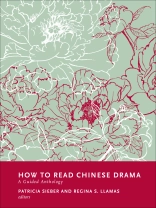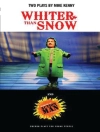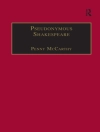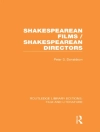This book is a comprehensive and inviting introduction to the literary forms and cultural significance of Chinese drama as both text and performance. Each chapter offers an accessible overview and critical analysis of one or more plays—canonical as well as less frequently studied works—and their historical contexts. How to Read Chinese Drama highlights how each play sheds light on key aspects of the dramatic tradition, including genre conventions, staging practices, musical performance, audience participation, and political resonances, emphasizing interconnections among chapters. It brings together leading scholars spanning anthropology, art history, ethnomusicology, history, literature, and theater studies.
How to Read Chinese Drama is straightforward, clear, and concise, written for undergraduate students and their instructors as well as a wider audience interested in world theater. For students of Chinese literature and language, the book provides questions to explore when reading, watching, and listening to plays, and it features bilingual excerpts. For teachers, an analytical table of contents, a theater-specific chronology of events, and lists of visual resources and translations provide pedagogical resources for exploring Chinese theater within broader cultural and comparative contexts. For theater practitioners, the volume offers deeply researched readings of important plays together with background on historical performance conventions, audience responses, and select modern adaptations.
Mục lục
Contents
Thematic Contents
Preface to the How to Read Chinese Literature Series
A Note on How to Use This Anthology
Chronology of Historical Events
Symbols, Abbreviations, and Typographical Usage
Introduction: The Cultural Significance of Chinese Drama
Patricia Sieber and Regina Llamas
Part I: Yuan and Ming Dynasties: Zaju Plays
1. The Story of the Western Wing: Tale, Ballad, and Play
Wilt L. Idema
1.1 Yuan Zhen’s (779–831) “The Tale of Oriole”
1.2 Story of the Western Wing in All Keys and Modes: “The Tale of Oriole” in Narrative Ballads
1.3 *The Story of the Western Wing: Student Zhang and Oriole on Stage
1.4 Controversies in the Ming and Qing Dynasties
2. Purple Clouds, Wrong Career, and Tiger Head Plaque: Jurchen Foreigners in Early Drama
Stephen H. West
2.1 Approaches to the Foreign
2.2 Wrong Career and Purple Cloud: Jurchen Performers in the World of Entertainment
2.3 The Tiger Head Plaque: Jurchen Performers in Their Native Lands
3. The Pavilion for Praying to the Moon and The Injustice to Dou E: The Innovation of the Female Lead
Patricia Sieber
3.1 Guan Hanqing (ca. 1220–after 1279), Zhulian xiu (fl. 1270–1300), and the Acting Culture of Yuan Zaju Theater
3.2 The Pavilion for Praying to the Moon: The Moral Suasion of Situational Ethics
3.3 The Injustice to Dou E: The Disruptive Power of Filial Remonstration
4. The Story of the Western Wing: Theater and the Printed Image
Patricia Sieber and Gillian Yanzhuang Zhang
4.1 Image-Making Between Self-Expression and Commerce
4.2 *The Story of the Western Wing: The Deluxe Edition (1499)—an App for Singing
4.3 The Story of the Western Wing: The Glossed Edition (c. 1609)—an App for Role-Playing
4.4 The Story of the Western Wing: The Exclusive Edition (1639–1640)—an App for Virtual Reality
5. The Orphan of Zhao: The Meaning of Loyalty and Filiality
Shih-pe Wang
5.1 Historical Background
5.2 The Orphan of Zhao: How the Yuan Zaju Play Dramatizes the Story
5.3 *The Orphan of Zhao, Wedge: The Confrontation between Good and Evil
5.4 *The Orphan of Zhao, Act 1: How the Orphan Was Smuggled Out
5.5 The Orphan of Zhao, Act 2: To Die or to Live On
5.6 The Orphan of Zhao, Act 3: A Play Performed for the Eyes of the Villain
5.7 The Orphan of Zhao, Acts 4 (and 5): Truth and Revenge
5.8 The Orphan of Zhao: Twenty-First-Century Adaptations
6. The Female Mulan Joins the Army in Place of Her Father: Gender and Performance
Shiamin Kwa
6.1 Xu Wei (1521–1593) and His Quartet of Ming Zaju Plays
6.2 Mulan: The Two-Act Structure
6.3 *Mulan: Changing Clothes
6.4 Mulan: Gentle Men
6.5 Mulan: Happily Ever After
Part II: Ming Dynasty and Early Qing Dynasty: Nanxi and Chuanqi Plays
7. Top Graduate Zhang Xie and The Lute: Scholar, Family, and State
Regina Llamas
7.1 Top Graduate and The Lute: Background
7.2 Top Graduate and The Lute: The Prologues
7.3 Top Graduate and The Lute: The Ungrateful Scholar
7.4 *The Lute: The Husk Wife
7.5 *Top Graduate and The Lute: Language and Comedy
8. The Southern Story of the Western Wing: Traditional Kunqu Composition, Interpretation, and Performance
Joseph S. C. Lam
8.1 Storied Kunqu and Its Traditional Practitioners
8.2 A Historical Account of Li Rihua’s Southern Western Wing
8.3 “Reading Li Rihua’s “Happy Time” and “Twelve Shades” as Kunqu
8.4 Li Rihua’s Composition of “Happy Time” and the Reactions It Elicited
8.5 Performing “Twelve Shades”
9. The Peony Pavilion: Emotions, Dreams, and Spectatorship
Ling Hon Lam
9.1 Under the Weather
9.2 *Waking to Dreams
9.3 In the Face of a Page
10. Green Peony and The Swallow’s Letter: Drama and Politics
Ying Zhang
10.1 New Dramas and Old Interpretive Techniques
10.2 A Dramatist’s Dilemma
10.3 Wu Bing, Ruan Dacheng, and the Factional Struggles in a New Political Culture
10.4 Weaponizing Drama
10.5 The Suspect Author
10.6 Evidence of Insinuation
10.7 Spontaneity in Theater
11. A Much Desired Match: Playwriting, Stagecraft, and Entrepreneurship
S. E. Kile
11.1 Li Yu: A Very Theatrical Entrepreneur
11.2 Leisure Notes: Toward a Coherent, Up-to-Date, and Accessible Theatrical Experience
11.3 How to Read an Opening Scene
11.4 Love, Art, and Theater in a World Full of Frauds
12. Peach Blossom Fan and Palace of Everlasting Life: History, Romance, and Performance
Mengjun Li and Guo Yingde
12.1 Kong Shangren and Hong Sheng: Chuanqi Plays as Alternative History
12.2 Peach Blossom Fan: “Talk about Love is Simply Pointless”
12.3 Palace of Everlasting Life: “With New Lyrics, (This Play) Is All about Love”
12.4 Peach Blossom Fan and Palace of Everlasting Life: Music as the Language of Love
12.5 Peach Blossom Fanand Palace of Everlasting Life: Performance as Political Remonstration
12.6 Peach Blossom Fanand Palace of Everlasting Life: Performance as Mediated History
Part III: Mid–Qing Dynasty: Zaju and Chuanqi Plays
13. Song of Dragon Well and Other Court Plays: Stage Directions, Spectacle, and Panegyrics
Tian Yuan Tan
13.1 Contextualizing Wang Wenzhi’s Court Drama
13.2 Wang Wenzhi’s Authorship of Court Drama
13.3 Texts and Functions of Wang Wenzhi’s Court Drama
13.4 In Praise of the Occasion and His Majesty: Functionalities of Court Plays
13.5 Pageantry, Formulaic Sequences, and Visual Spectacles
13.6 Engagement through Literary Elements
14. The Eight-Court Pearl: Performance Scripts and Political Culture
Andrea S. Goldman
14.1 Eight-Court Pearl: The Script
14.2 Suzhou School History Plays and Other Textual Antecedents
14.3 Violence as the Solution
14.4 Who Were the Disaffected?
Part IV: Ming, Qing, and Modern Eras: Ritual Plays
15. Mulian Rescues His Mother: Play Structure, Ritual, and Soundscapes
Sai-shing Yung
15.1 The Iconography of Hell
15.2 Zheng Zhizhen’s Mulian Rescues His Mother: Exhortation to Goodness
15.3 Exhortation: Structure and Plot
15.4 Mulian Plays and Sonic Force in Performance
15.5 The Soundscape of Exorcism
16. The Story of Hua Guan Suo: Chantefable and Ritual Plays
Anne E. Mc Laren
16.1 Genres
16.2 The Chantefable The Story of Hua Guan Suo: Regionality
16.3 The Story of Hua Guan Suo: Central Themes
16.4 Origins and Historical Development
16.5 Authorship
16.6 Performative Aspects
16.7 The Story of Hua Guan Suo: Example of a Prelude
16.8 Chantefables and Plays: The Oath of the Brotherhood
16.9 The Story of Hua Guan Suo: An Example of “Ten Beats to a Line”
16.10 A Play of Exorcism from Guichi (Anhui Province), Twentieth Century
16.11 Guan Suo Plays in Xiaotun Village, Chengjiang (Yunnan Province), Twentieth Century
16.12 Combat Sequences
Acknowledgments
Contributors
Visual Resources
Glossary-Index
* Excerpts from those plays are also featured, accompanied by modern Chinese translation and extensive annotation, in Guo Yingde, Wenbo Chang, Patricia Sieber, and Xiaohui Zhang, eds., How to Read Chinese Drama in Chinese: A Language Companion. New York: Columbia University Press (under advance agreement).
Giới thiệu về tác giả
Patricia Sieber is associate professor of Chinese at Ohio State University. She is the author of Theaters of Desire: Authors, Readers, and the Reproduction of Early Chinese Song-Drama, 1300–2000 (2003).Regina S. Llamas is associate professor in the humanities at IE University, Spain. She is the translator of Top Graduate Zhang Xie: The Earliest Extant Chinese Southern Play (Columbia, 2021).












